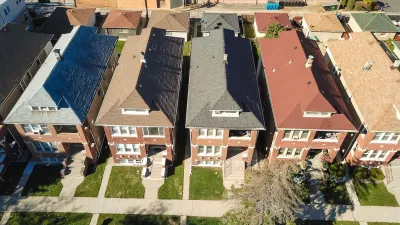Renting out luxury homes has become an attractive choice in today's housing market. High-end renters get many of the benefits of owning a home, with greater built-in flexibility, and without the financial risk.
“A growing number of people who can afford to buy trophy homes are, instead, opting for a more temporary solution: the trophy rental,” write Candace Jackson and Lauren Schuker Blum. Luxury renters are opting to invest in other markets and ventures, rather than “tying up their money in steep down payments” they add. Families and singles alike are opting to rent instead of buy and are even willing to make substantial investments in perfecting their interim abodes.
The outcome of this shift? High-end rentals in coastal gateway markets in states such as New York, California and Florida have seen an uptick in prices, mirroring a larger national trend. Apartments in luxury towers, penthouses, condos and million dollar homes in prime locations within cities such as Los Angeles, Miami and San Francisco can cost anywhere from $10,000 to $90,000 a month to rent. And, "[t]he relatively low inventory and high demand means unsolicited rental offers on for-sale properties have become commonplace," explain Jackson and Blum.
“The rise of the trophy rental comes as many Americans continue to abandon ownership in the wake of the country's housing crisis and credit crunch,” add the authors. “The U.S. homeownership rate was 65.3% in the third quarter of 2012, its lowest level since 1996, according to the Census Bureau. In the midst of the housing boom, in 2004, the homeownership rate reached 69.4%.”
FULL STORY: A New Lease on Luxury

Trump Administration Could Effectively End Housing Voucher Program
Federal officials are eyeing major cuts to the Section 8 program that helps millions of low-income households pay rent.

Planetizen Federal Action Tracker
A weekly monitor of how Trump’s orders and actions are impacting planners and planning in America.

Ken Jennings Launches Transit Web Series
The Jeopardy champ wants you to ride public transit.

Tackling Soil Contamination With Nature-Based Solutions
Los Angeles County residents and experts are turning to nature-based methods like bioremediation to address long-standing and fire-exacerbated soil contamination without resorting to costly and disruptive removal.

Rebuilding Smarter: How LA County Is Guiding Fire-Ravaged Communities Toward Resilience
Los Angeles County is leading a coordinated effort to help fire-impacted communities rebuild with resilience by providing recovery resources, promoting fire-wise design, and aligning reconstruction with broader sustainability and climate goals.

When Borders Blur: Regional Collaboration in Action
As regional challenges outgrow city boundaries, “When Borders Blur” explores how cross-jurisdictional collaboration can drive smarter, more resilient urban planning, sharing real-world lessons from thriving partnerships across North America.
Urban Design for Planners 1: Software Tools
This six-course series explores essential urban design concepts using open source software and equips planners with the tools they need to participate fully in the urban design process.
Planning for Universal Design
Learn the tools for implementing Universal Design in planning regulations.
Ada County Highway District
Clanton & Associates, Inc.
Jessamine County Fiscal Court
Institute for Housing and Urban Development Studies (IHS)
City of Grandview
Harvard GSD Executive Education
Toledo-Lucas County Plan Commissions
Salt Lake City
NYU Wagner Graduate School of Public Service




























